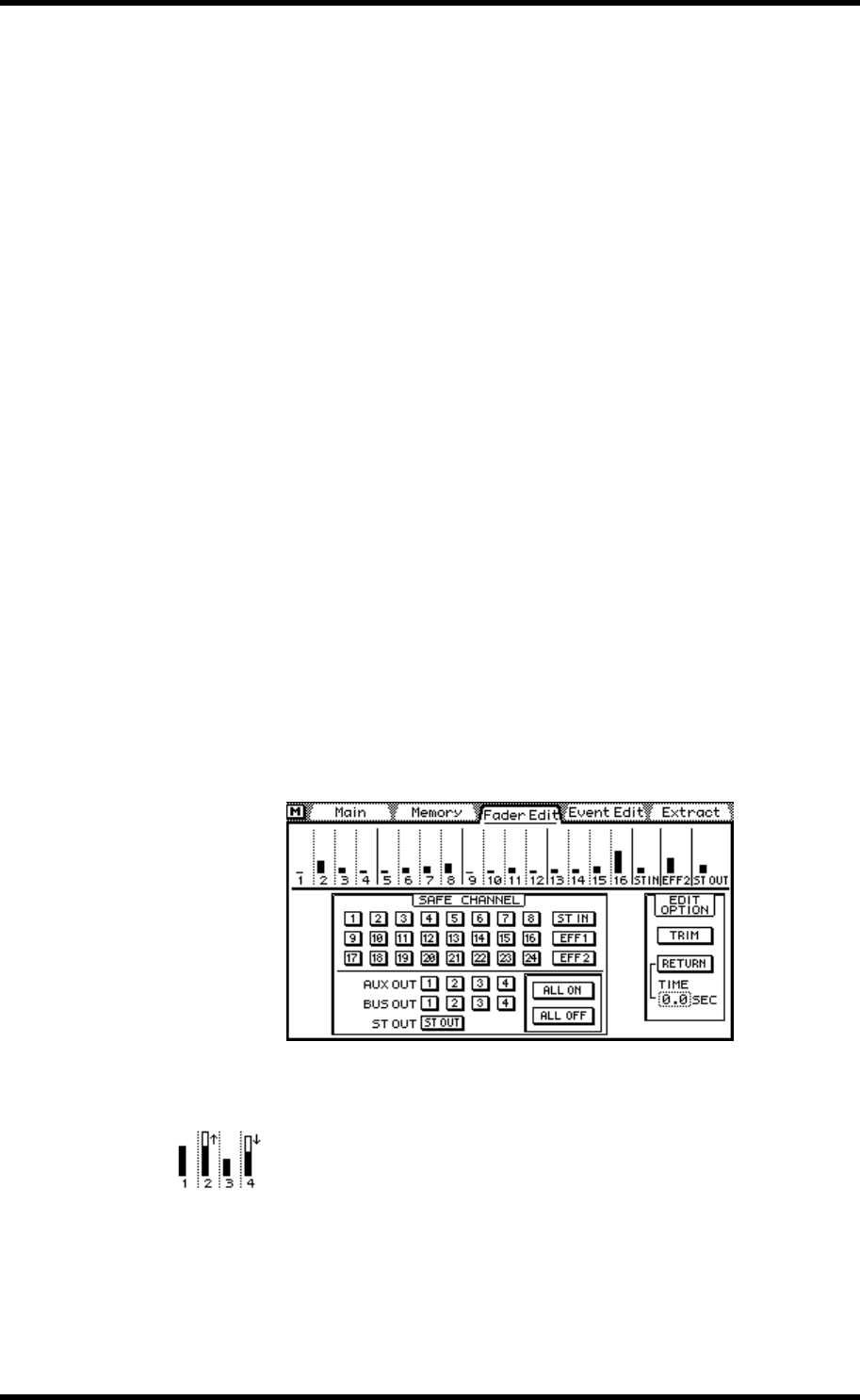
Editing Fader Moves On-the-fly 191
03D—Owner’s Manual
7. At the point where you want to edit the fader moves, press the channel’s
[SEL] button.
8. Adjust the fader as required.
Use the Fader Edit page to check fader positions relative to previously recorded fader
data. See the following Fader Edit page for more information.
When editing in Trim mode, you cannot operate the faders while they are moving.
9. At the point where you want stop editing, press the channel’s [SEL] but-
ton again.
How the fader continues depends on the EDIT OPTIONs.
10. To stop the automix, stop the external timecode source, or use the auto-
mix STOP switch.
When the Undo function is enabled, a confirmation dialog box appears asking whether
you want to record or abort the recorded events.
The new fader moves are added to the current automix.
You can revert to the previous automix, discarding the new fader moves using the undo
function. See Undoing Automix Operations on page 200 for more information.
Automix recording can be stopped using the ABORT switch. If automix recording is
aborted, the newly recorded data is discarded. If the Undo function is enabled, the
newly recorded data is copied to the undo buffer. You must press the ABORT switch
while recording is in progress. Pressing it when recording has already stopped will not
work. If memory is low and the undo buffer is disabled, you may not be able to abort
playback or recording. In this case, the ABORT switch appears gray.
Fader Edit Page
The Fader Edit page shows fader positions relative to previously recorded fader data.
1. Use the [AUTOMIX] button to locate the Fader Edit page.
An arrow appears next to the fader being edited, indicating which way it needs to be
moved to get back to the fader position previously recorded.
In this example, channel 2 fader has been lowered. The arrow pointing
up indicates that the fader needs to be moved up to get back to the fader
position previously recorded. Channel fader 4, on the other hand, has
been raised, and the arrow pointing down indicates that the fader needs
to be moved down to get back to the fader position previously recorded.


















